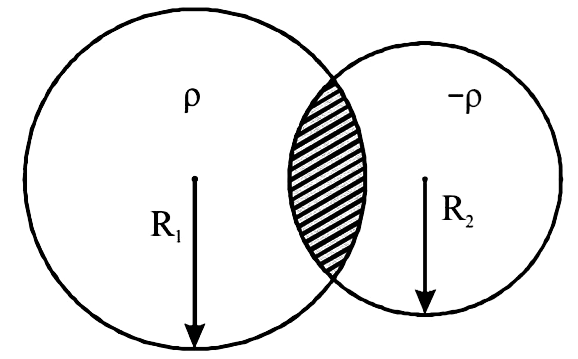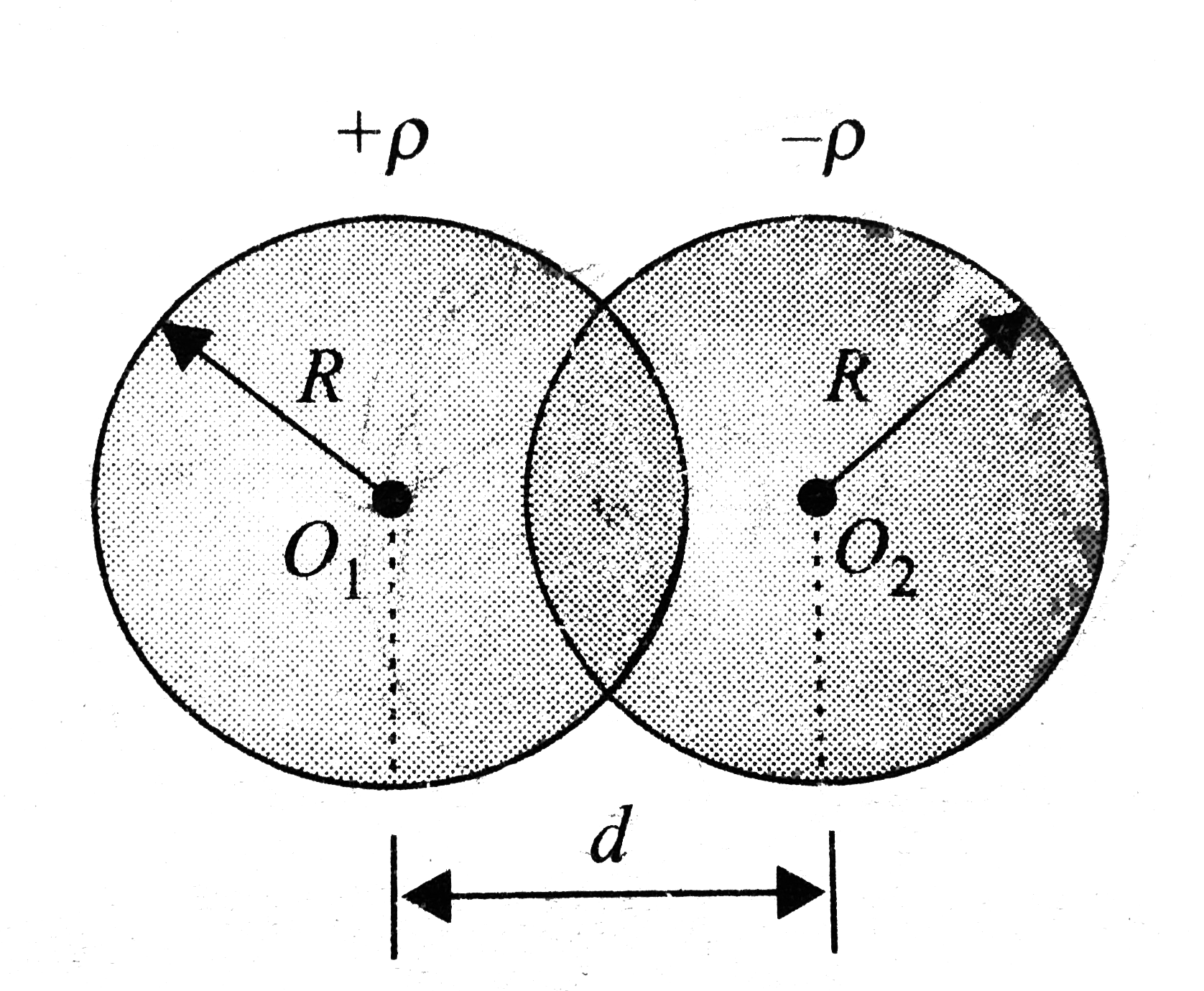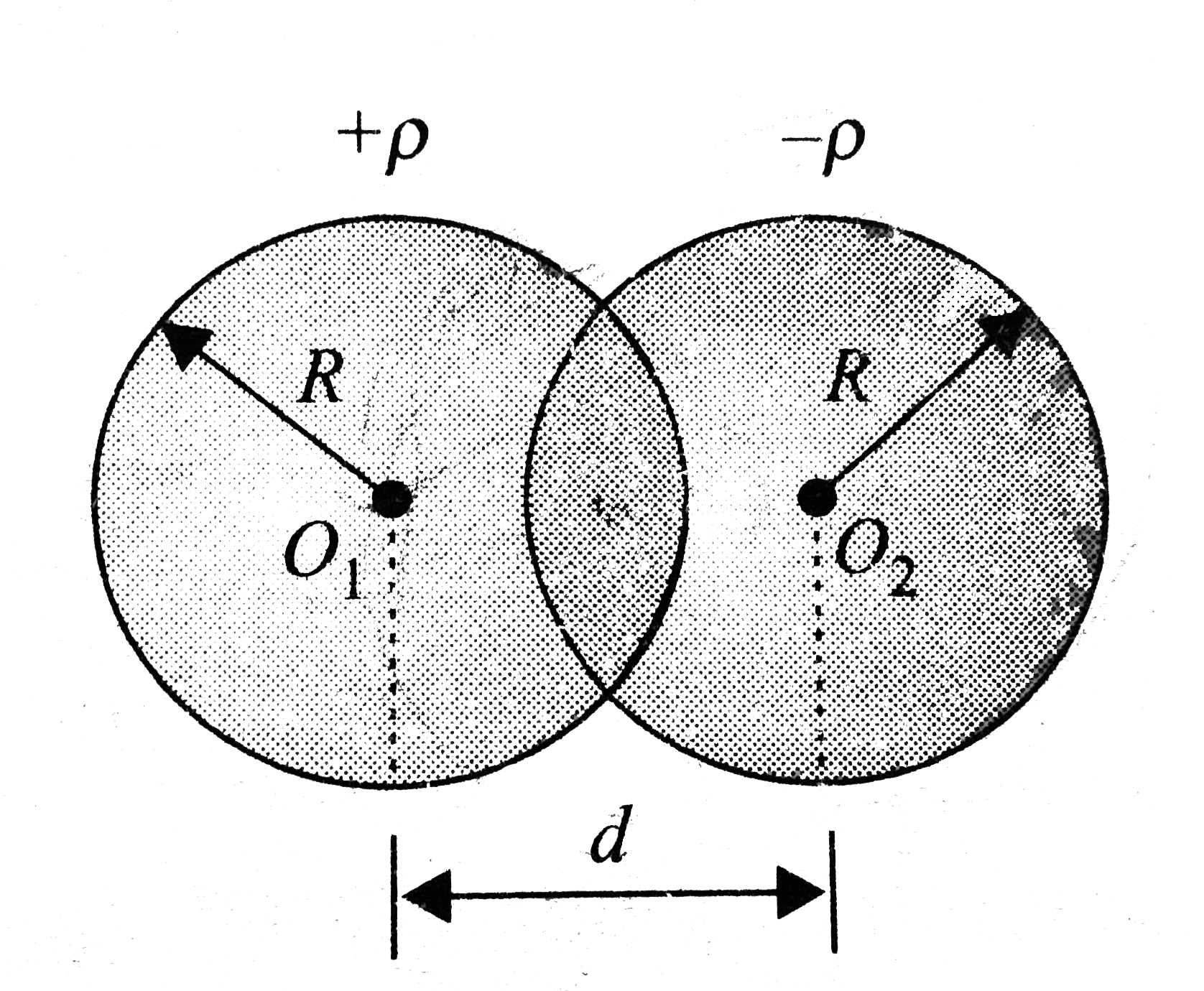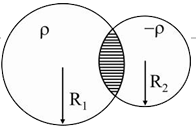Two non-conducting spheres of radii R1 and R2 and carrying uniform volume charge densities +ρ and −ρ, respectively, are placed such that they partially overlap, as shown in the figure. At all points in the overlapping region

the electrostatic field is zero.
the electrostatic potential is constant.
the electrostatic field is constant in magnitude.
the electrostatic field has same direction.
The correct Answer is:C, D
Step by step video & image solution for Two non-conducting spheres of radii R_1 and R_2 and carrying uniform volume charge densities +rho and -rho, respectively, are placed such that they partially overlap, as shown in the figure. At all points in the overlapping region by Physics experts to help you in doubts & scoring excellent marks in Class 12 exams.
Related Playlists
- BOOK - MOTIONCHAPTER - ELECTROSTATICS-IIEXERCISE - Exercise - 4 (Level - I)10videos
ELECTROSTATICS-II
- BOOK - MOTIONCHAPTER - ELECTROSTATICS - I EXERCISE - EXERCISE - 4 (Level -II) PREVIOUS YEAR - JEE ADVANCED13videos
ELECTROSTATICS - I
- BOOK - MOTIONCHAPTER - ERRORS , THEORY EXERCISE - EXERCISE 4 (LEVEL -II)10videos
ERRORS , THEORY
Similar Practice Problems
- Question 1 - Select One
Two non-conducting solid spheres of radii R and 2R, having uniform volume charge densities ρ1 and ρ2 respectively, touch each other. The net electric field at a distance 2R from the centre of the smaller sphere, along the line joining the centres of the spheres, is zero. The ratio ρ1ρ2 can be
A(a) −4B(b) −3325C(c) 3225D(d) 4 - Question 1 - Select One
Two conducting spheres of radii r1 and r2 are charged to the same surface charge density . The ratio of electric field near their surface is
Ar21/r22Br22/r21Cr1/r2D1:1 - Question 1 - Select One
Two conducting spheres of radii r1 and r2 are equally charged. The ratio of their potentral is-
Ar21/r22Br22/r21Cr1/r2Dr2/r1 - Question 1 - Select One
Two charged spheres of radii R1andR2 having equal surface charge density. The ratio of their potential is
AR1/R2BR2/R1C(R1/R2)2D(R2/R1)2 - Question 1 - Select One
There are two nonconducting spheres having uniform volume charge densities ρ and −ρ . Both spheres have equal radius R. The spheres are now laid down such that they overlap as shown in Fig.2.125. Take →d=O1−→O2.

The electric field →E in the overlapped region isAnonuniformBzeroCρ3ε0→dD−ρ3ε0→d - Question 1 - Select One
There are two nonconducting spheres having uniform volume charge densities ρ and −ρ . Both spheres have equal radius R. The spheres are now laid down such that they overlap as shown in Fig.2.125. Take →d=O1−→O2.

The potential difference ΔV between the centres of the two spheres for d=R isAρ3ε0d2Bρε0→d2CzeroD2ρε0d2 - Question 1 - Select One
A solid non-conducting sphere of radius R is charged with a uniform volume charge density ρ. Inside the sphere a cavity of radius r is made as shown in the figure. The distance between the centres of the sphere and the cavity is a. An electron of charge 'e' and mass 'm' is kept at point P inside the cavity at angle θ=45∘ as shown. If at t = 0 this electron is released from point P, calculate the time it will take to touch the sphere on inner wall of cavity again.
 A√3Rmε0reρaB√6mε0reρaC√6√3mε0ReρaD√6√2mε0reρa
A√3Rmε0reρaB√6mε0reρaC√6√3mε0ReρaD√6√2mε0reρa - Question 1 - Select One
Two concentric conducting spheres of radii R and 2R are crrying charges Q and −2Q, respectively. If the charge on inner sphere is doubled, the potetial differece between the two spheres will
 Abecomes two timesBbecome four timesCbe halvedDremain same
Abecomes two timesBbecome four timesCbe halvedDremain same
Similar Questions
Two non-conducting spheres of radii R1 and R2 and carrying uniform volume charge densities +ρ and −ρ respectively are placed such that they partially overlapping region.
 View Solution
View SolutionThere is a hemisphere of radius R having a uniform volume charge density ρ. Find the electric potential and field at the centre
View Solution

